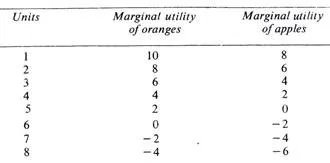Business Decision and Economic Problems
Business decisions are pivotal for the success of an organization, and they are often made in response to various economic problems. These problems can arise from both internal factors (like management inefficiencies or resource allocation issues) and external factors (like market competition or changes in government policies). Effective business decisions are a blend of understanding economic principles, analyzing data, and predicting future trends.
Nature of Economic Problems
Economic problems arise due to the basic issue of scarcity. Resources are limited, but human wants are infinite. This leads to three fundamental economic problems that businesses face:
- What to produce?:
Businesses must decide what goods and services to produce. Given limited resources, it’s crucial to identify which products will generate the most value for the business while meeting customer demands. Misjudging this can lead to a misallocation of resources and financial losses.
- How to produce?:
This pertains to the methods and techniques used in the production process. A business must choose the most efficient combination of labor, capital, and technology. The decision on how to produce is influenced by factors like cost efficiency, technological advancements, and labor availability.
- For whom to produce?:
This relates to identifying the target market and determining how to allocate the produced goods or services. The distribution of goods depends on the purchasing power of different segments of the population, and businesses must decide how to maximize profits while catering to diverse consumer groups.
These fundamental problems require businesses to make constant decisions regarding resource allocation, production techniques, and market segmentation.
Economic Problems Impacting Business Decisions
- Resource Scarcity:
One of the primary economic problems that businesses face is scarcity. With limited resources available, businesses must prioritize their production and investment decisions. Scarcity forces firms to make choices about which products to produce, how to allocate capital, and how to manage labor.
- Inflation:
Inflation, or the rise in prices over time, affects the purchasing power of consumers and the cost of production. In an inflationary environment, businesses may face increased costs for raw materials, labor, and utilities. To manage this, companies need to adjust pricing strategies, cut costs, or innovate to maintain profitability.
- Uncertainty:
Uncertainty in the economy, such as fluctuations in demand, technological changes, or political instability, can disrupt business decisions. Businesses must forecast potential outcomes and adopt risk management strategies to navigate these uncertainties. This often leads to decisions like diversifying product lines or entering new markets to reduce dependence on a single revenue stream.
- Market Competition:
Competition in the market also presents an economic challenge. The presence of numerous firms offering similar goods and services forces businesses to be more strategic in their pricing, marketing, and production decisions. Understanding the nature of market competition helps a business decide whether to focus on cost leadership, differentiation, or innovation.
Types of Business Decisions
- Strategic Decisions:
These are long-term decisions that define the direction of the business. Examples include entering new markets, investing in new technologies, or changing business models. Strategic decisions are heavily influenced by economic problems like market trends, resource availability, and technological advancements.
- Tactical Decisions:
These are medium-term decisions that aim to implement the strategies laid out by the business. These may involve decisions on production methods, inventory management, or pricing strategies. Economic problems such as inflation or changes in consumer preferences often drive these decisions.
- Operational Decisions:
These are short-term decisions concerned with day-to-day operations. They are aimed at improving efficiency and reducing costs. Examples include managing employee shifts, setting daily production targets, or adjusting prices based on competitor actions. Operational decisions are highly responsive to economic problems like changes in labor costs or supply chain disruptions.
Economic Theories for Decision-Making
- Microeconomics:
Businesses use microeconomic principles to assess how individuals and firms make choices about the allocation of resources. These principles help in setting prices, determining output levels, and deciding on the most cost-effective production methods.
- Cost-Benefit Analysis:
This involves comparing the costs of a decision with the expected benefits. The goal is to determine whether the benefits of a decision outweigh the costs, guiding businesses toward more profitable choices.
-
Market Structures:
Understanding different market structures (perfect competition, monopolistic competition, oligopoly, and monopoly) helps businesses decide on pricing strategies, production levels, and marketing approaches.







